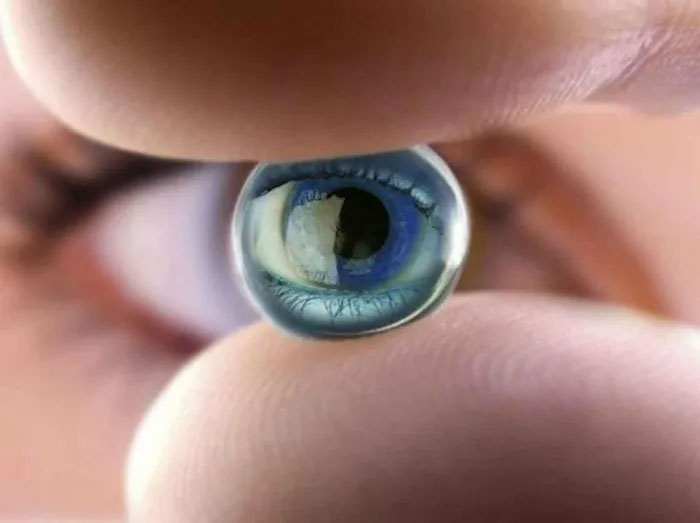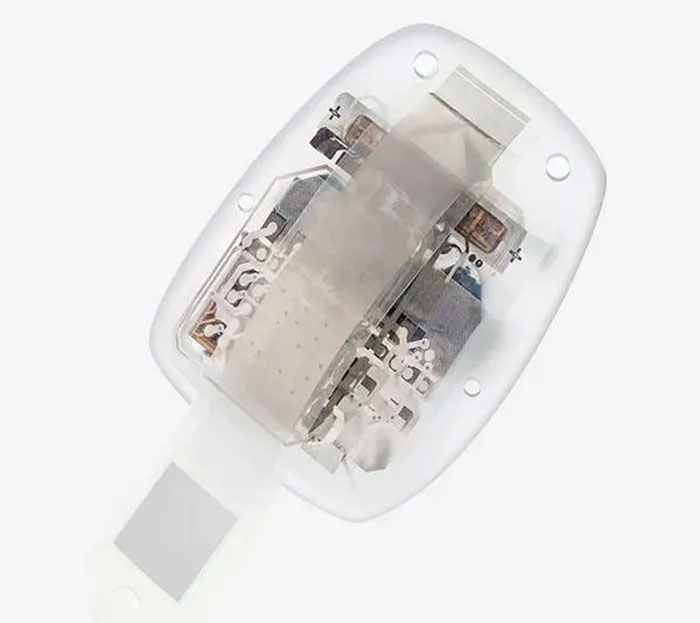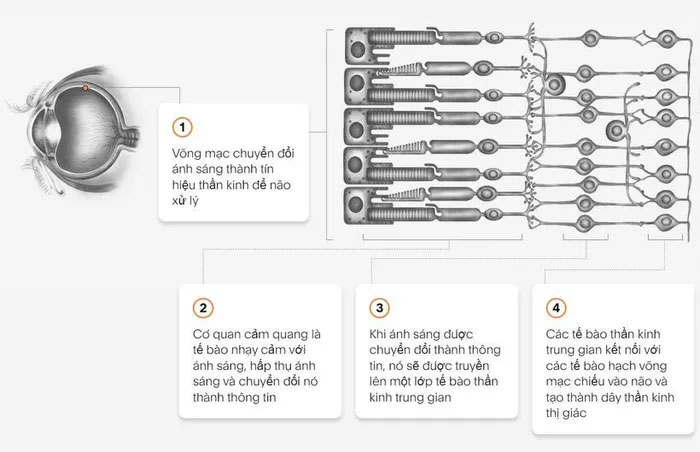American startup provides scientific eye implants for blind people
People blinded by retinitis pigmentosa and dry age-related macular degeneration have hope of seeing again.

The outlook is for people blind from retinitis pigmentosa to be able to see again.
An Alameda, California startup called Science has designed a visual prosthesis called Science Eye that can restore vision in people with retinitis pigmentosa.
' Scientific Eye [is] a visual prosthesis aimed at retinitis pigmentosa (RP) and dry age-related macular degeneration (AMD), two severe forms of blindness that currently have no good options for patients' - Science's introduction said.

Science Eye implant device.
The company also notes that the device will not work for people with glaucoma or cataracts.
'In diseases such as RP and dry AMD, the light-sensitive cells in the back of the eye – the photoreceptors – die, but the cells of the optic nerve remain.
By inserting a gene into the cells of the optic nerve, we can stimulate them using a small screen inserted into the eye ' - Science said on the company's website.

Science's analysis of the "scientific eye".
Science Eye is a 'hybrid device' with two main components:
The first part is an implant consisting of a wireless electrical coil and an ultra-thin, flexible micro-LED array that is applied directly to the retina.
This implantable device is created based on 2 factors:
Optical gene therapy: A protein nanoparticle is used to deliver genes to certain retinal ganglion (optic nerve) cells, making them sensitive to light at a specific wavelength.
High-resolution display film: A small, flexible, high-resolution display film is surgically inserted into the retina to allow fine control of the new light-sensitive ganglion cells.

The process of installing "scientific eyes".
During the surgery, the implant is slid over the eye and the monitor is inserted through an incision. The implant is then securely fixed and the screen is placed on the retina. This surgery is much more invasive than other procedures such as cataract treatment.
This electronic device is similar in size to the glaucoma shunts widely used today, is routinely inserted without the need for general anesthesia, and cannot be felt by the patient after insertion. enter.
The second part is a pair of frameless glasses similar in size and shape to regular prescription glasses that contain a miniature infrared camera and an induction coil.
After surgery, the eye will receive enough digital visual information to avoid collisions when going out.
The company explains that making the optic nerve sensitive to light does not necessarily restore vision. The company explains: 'the signal sent down the optic nerve is greatly compressed compared to the image formed on the photoreceptors through the lens of the eye' and it is 'this compressed data that the Science implant Eye will stimulate the optic nerve'.

After surgery, the eye does not receive images but instead receives digital information.
Science ensures that a person using the Science Eye can walk across the street 'without being hit by a car'. The company added that clinical trials for the Science Eye will begin in the next 18 months.
According to the US National Eye Institute (NIH), retinitis pigmentosa is a group of rare eye diseases that affect vision by causing cells in the retina to slowly break down over time, eventually leading to loss of vision. It's something people are born with, and symptoms often begin in childhood.
With research on "scientific eyes" , the opportunity to bring light to people with the above two diseases is completely promising.
Science's CEO and co-founder is Max Hodak. He was the founder of the controversial Neuralink company of technology billionaire Elon Musk.
Song Science is not the only company offering hope for restoring vision to people with this disease. Paris-based biotech company GenSight Biologics and New York-based Bionic Sight are also testing optogenetics - a form of gene therapy that delivers proteins called opsins via injection into the eye to increase sensitivity. sensitivity of cells in the patient's retina.
- New technology helps blind people see
- US military invests $ 65 million to study brain implants
- Transplantation of biological eye tissue helps blind people see
- Breakthrough helps restore vision for the blind
- American startup sucks CO2 from the air to make diamonds
- Blind people make people look respectful
- A method to cure color blindness has been found
- Developed the first electronic eye in the world
- Smart gloves 'look' for blind people
- Equipment to help the blind
- Humans are both blind and deaf and are deaf to natural law
- The man is blind because of 'dental implants'
 13 causes of non-itchy rash
13 causes of non-itchy rash How the mouse with human ears changed the world?
How the mouse with human ears changed the world? The truth about 'fried rice syndrome!
The truth about 'fried rice syndrome! What is dental implant?
What is dental implant?